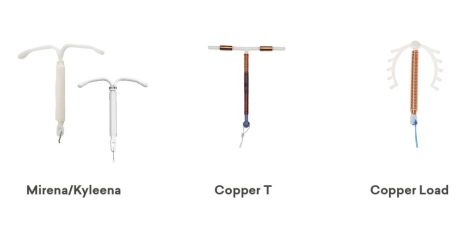Birth Control and You
With so many options, it can be scary to choose from. We’re here to help.
As a woman who is always looking out and hoping to try the newest ways to have sex from Cosmopolitan articles, let me tell you: sex is great! Keeping a healthy, active sex life however? That’s hard.

For one, we can get pregnant. And for someone who’s not ready to have a little them in the world, that can make having an active sex life not so fun. I hear my girlfriends and other woman talking about birth control from the terrible side effects, the scary looking IUDs, the fear that comes from when you find out your condom broke, and having periods lasting for weeks.
All of that sounds scary, and I too have experienced first hand the negative side effects of birth control. While taking birth control, I had intense mood swings and threw up because my cramps were so severe. It was because of this I started to do some digging around. I took to the internet and landed on Planned Parenthood’s website and to my surprise, I actually found a lot more than I had expected.
On its website, Planned Parenthood has a page listing 18 different types of birth control. They even tell you how effective each method (and advise you to always wear a condom since every other kind of birth control does not stop HIV).
On their lists, the top four most effective types of birth control are: the implant, IUD, sterilization and vasectomy. For a birth control novice you might be thinking, what are all these things? But don’t worry, I’m here to explain.
The birth control implant, aka Nexplanon, is a tiny rod that is shaped like a matchstick. It is inserted into your arm and lasts four years. It’s a hit and miss for multiple ladies. One woman @ChasityHarris_ took to Twitter and asked what side effects other women have dealt with while on Nexplanon and the main result was that every body adjusted differently. Even though, it lasts for four years the negative reviews don’t make it sound all that desirable.

Next is the IUD, which stands for Intrauterine Device. The IUD comes in five different types and all are inserted into the vagina. The ParaGard is a copper T that lasts up to 12 years and is the only copper IUD which doesn’t contain hormones. The last 4 are all hormonal, meaning they use the hormone progestin which closely resembles the hormone progesterone to stop pregnancy. The four hormonal IUD’s are Mirena lasts six years, Kyleena lasts five years, Liletta lasts four years, and Skyla lasts three years.
Both the birth control implant and hormonal IUD prevent pregnancy by using progestin in two ways. The first way is that the progestin can stop the eggs from leaving the ovaries, preventing the sperm from reaching contact. The second way is that progestin can thicken the mucus from the cervix, stopping the sperm from ever reaching the egg. How the Paragard stops the sperm is the copper, sperm does not like copper. Think of it like your own personal Wonder Woman cuffs.

One more method is sterilization, also known as tubal ligation, which is an act that permanently closes a woman’s fallopian tubes.This procedure is for women who are positive that they do not want children and often it cannot be undone. Sometimes the procedure can be reversed by IVF also known as in-vitro fertilization, but there is no guarantee that after the reversal procedure you can once again get pregnant. Also, even with the tie of the fallopian tubes women will still receive their periods.
The male version which is a vasectomy (also known as male sterilization) involves tying the males tubes. The small tubes in a males scrotum hold sperm. Once the tubes are blocked or cut off the sperm can no longer leave the body (Fun Fact: Vasectomy comes from the word vas deferens which is the name of the tubes in the scrotum). Like its female counterpart, it is sometimes possible to get the vasectomy reversed. However the results may not differ, there are no guarantees.
Another cool thing Planned Parenthood has is an online quiz that helps you decide which type of birth control would better suit your body. To see how well it worked, I decided to give a crack at it.

The quiz’s questions range from rating your top five priorities you look for in birth control to how comfortable you, your partner, and a family member would feel about a certain type of birth control. The quiz told me my results along with the reminder to use a condom. Mine were to use a hormonal IUD, the implant, and the Paragard IUD.
After reading up on birth control, I’ve realized it’s best to double-up on protection and there are a lot of options. Be sure to talk to your doctor and find out which birth control is better for you and your body. In the end, we all want our bodies to feel safe and not have to worry the next time a period comes around.












